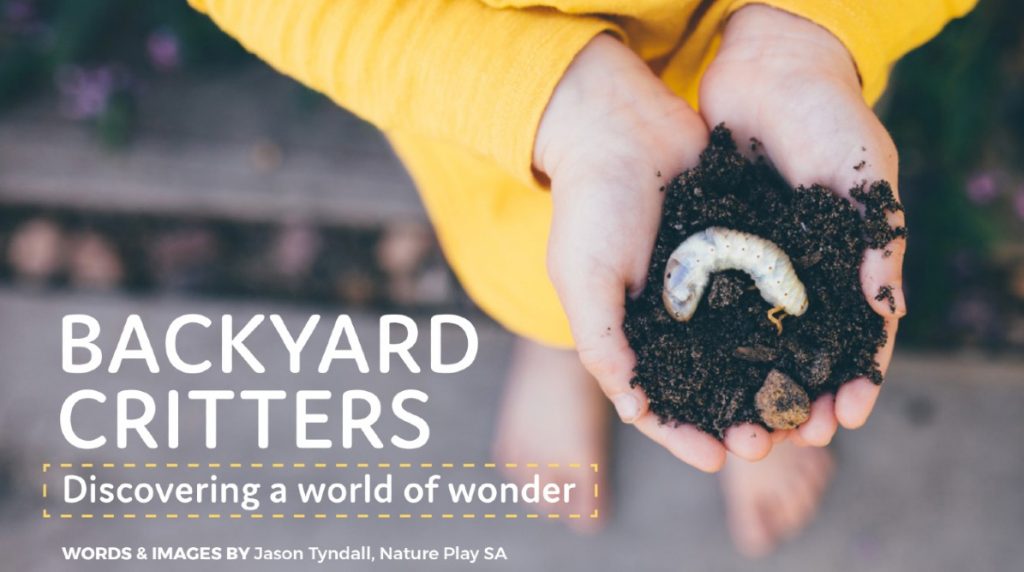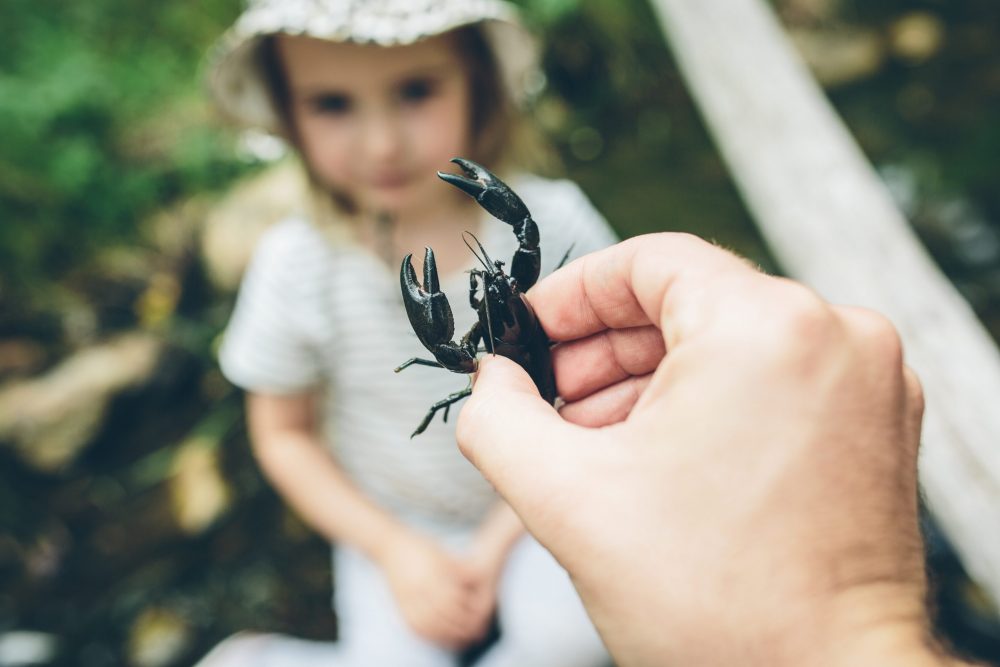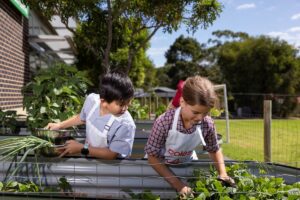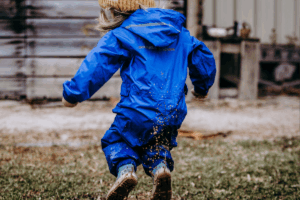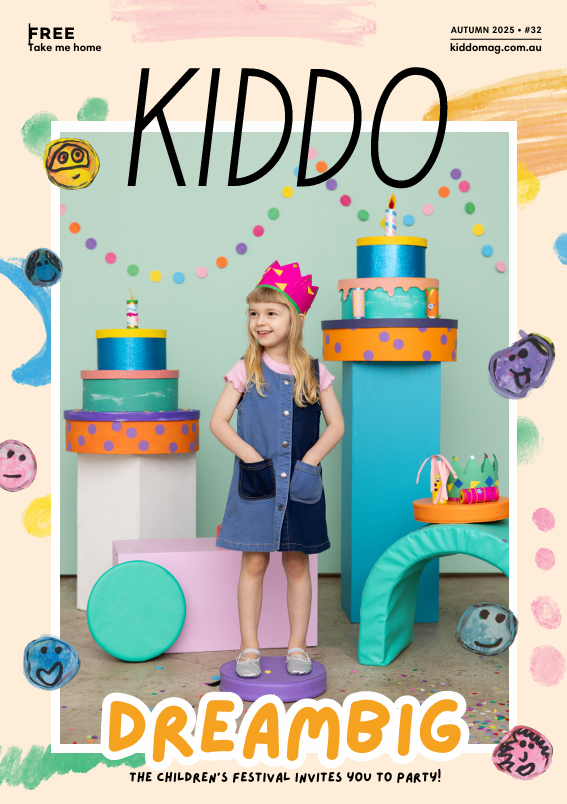WORDS & IMAGES BY JASON TYNDALL
Backyard critters feature in many children’s books such as The Very Hungry Caterpillar, Stories from Bug Garden and Bee. They’re familiar, friendly and accessible in story, and just as fascinating and educational in real life.
Backyard critters aren’t everybody’s cup of tea. In fact, they’re easy to label ‘dangerous’ or avoid simply because it feels like a lot of effort to learn about them, especially if you’re not overly enthusiastic about ‘creepy crawlies’. But it’s important to look beyond any ick-factor and consider the important role they have to play in encouraging children to explore their curiosity, develop empathy towards living creatures and discover basic scientific concepts, such as lifecycles and pollination.
Whether it’s giggling at the tickly legs of a slater, feeling the stickiness of a worm or quietly watching a bee pollinate a flower, the benefits for children’s sensory and emotional development are innumerable, making backyard critters a worthwhile investment in your time – and your family’s.
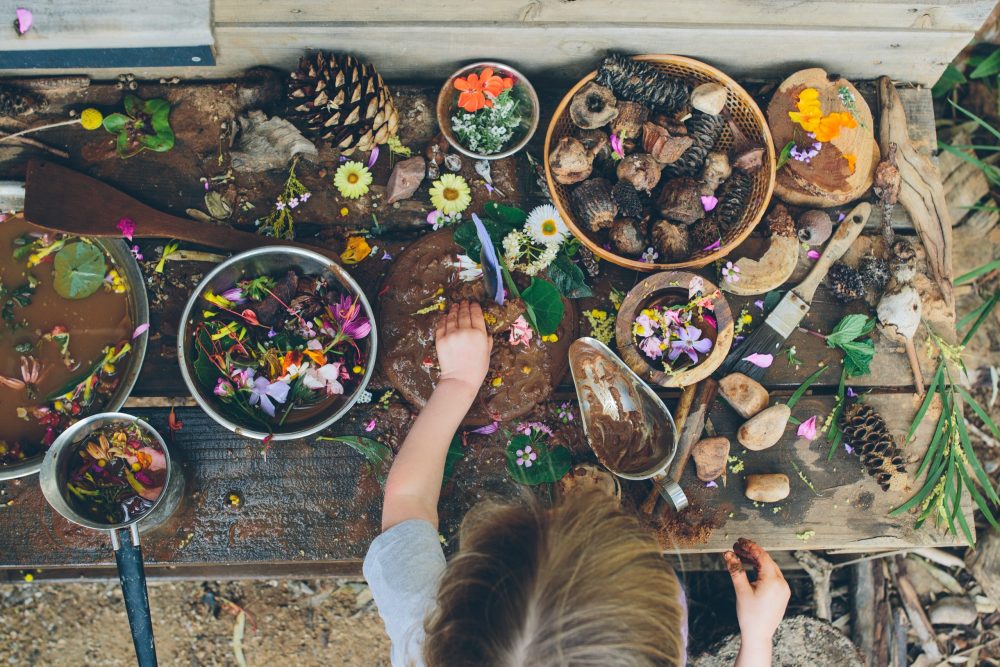
GETTING TO KNOW YOUR BACKYARD CRITTERS
NATIVE BEES
Most native bees nest alone, don’t have hives and don’t make honey. In fact, many like to live in bare soil. They’re important for your garden, your veggie patch and the environment, pollinating native plants that in turn support other forms of life. Common native bees include the Blue-banded Bee, Leafcutter Bee, Carpenter Bee, Masked Bee and Resin Bee.
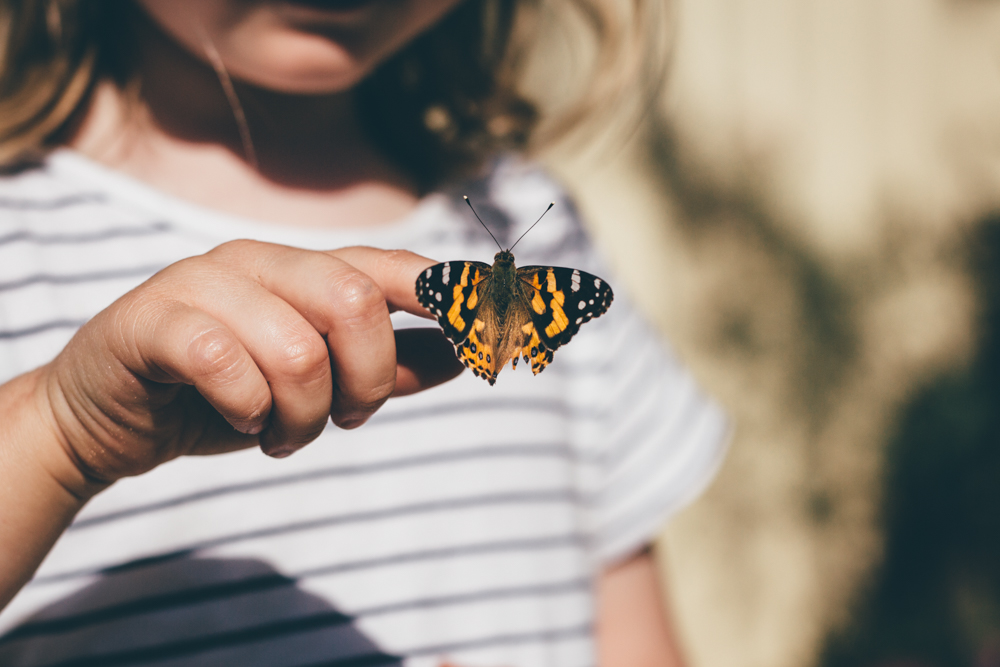
BUTTERFLIES
What is more fascinating than a caterpillar spinning itself into a chrysalis and emerging as a butterfly? Your little ones may also be interested to know that butterflies taste with their feet, only lay eggs on the plants they know their caterpillars will eat and they pollinate flowers. Common backyard butterflies include the Lesser Wander and Painted Lady.
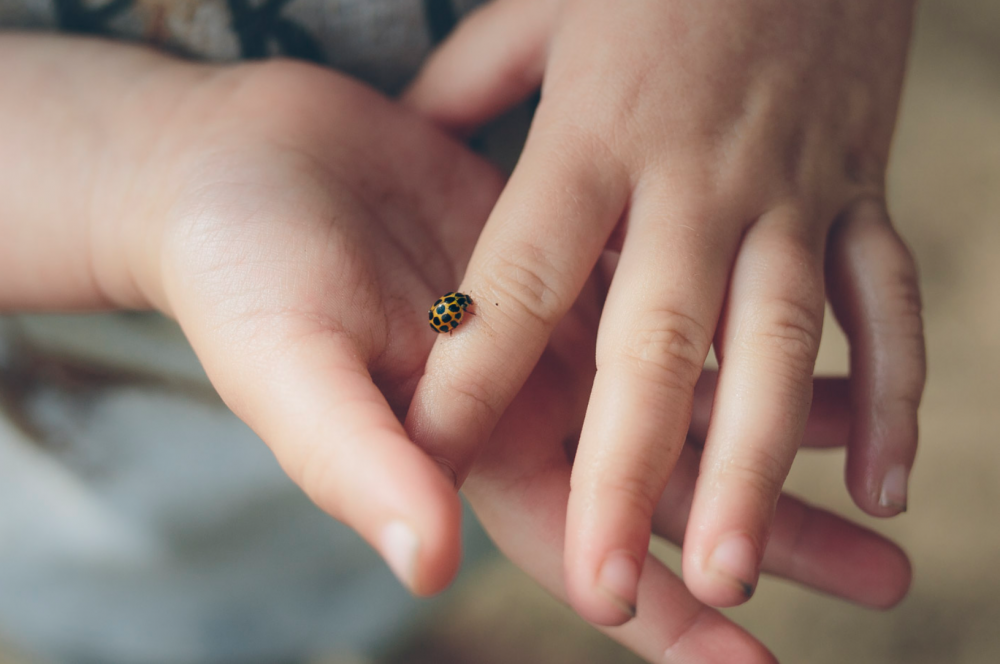
LADYBIRDS
Ladybirds are easily recognisable by their colour and spots. In your garden, they help to control aphids – tiny insects that can damage fruit trees, veggies and other plants. Ladybirds are particularly attracted to coriander, dill and carrot flowers, so planting some when you encounter aphids may help. Common Ladybirds include the Transverse Ladybird, Common Spotted Ladybird and 28-Spotted Ladybird.
SLATERS
Slaters can be found under almost every log or rock and are often referred to as ‘roley poleys’, referring to their ability to roll into a ball, particularly when disturbed. If your little ones look closely they will be able to count 14 segments on a slaters body. Interestingly, they’re classified as a crustacean, making them a relative of crabs and yabbies.
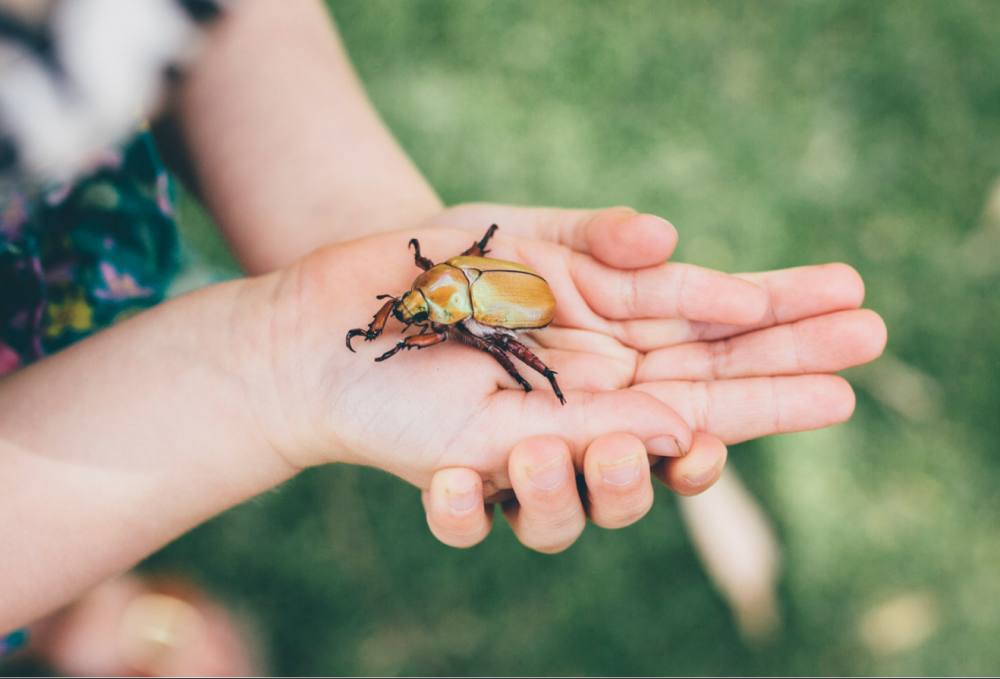
WORMS AND BEETLE GRUBS
Digging in soil has a range of health and sensory benefits for children, one of which is the opportunity to discover worms or white beetle grubs. Not only do they keep your garden healthy, they also offer children a chance to take a closer look at soil dwelling critters. Some of the beetle grubs you find may belong to the Christmas Beetle – another critter commonly spotted in the summer months.
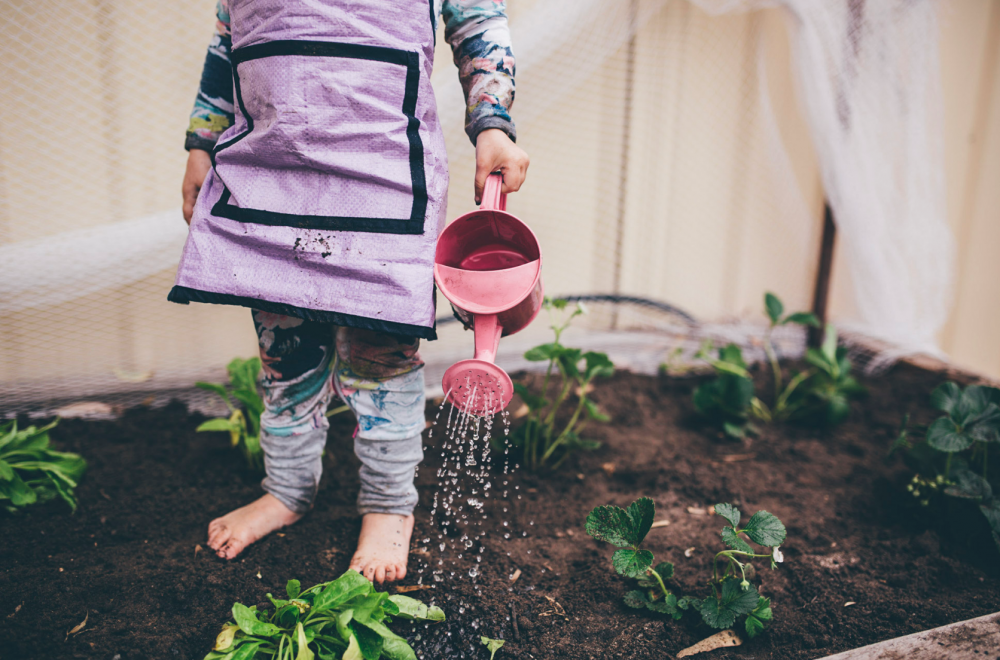
ATTRACTING BACKYARD CRITTERS
- Plant colourful flowers that bloom in different seasons (chat to your local hardware store or plant nursery for ideas)
- Introduce some movable logs and rocks to peek under
- Start a veggie patch or herb garden
- Grow stone fruit and citrus trees
- Research, make and install a native bee hotel
- Install a bird bath or water source
- Avoid using chemicals such as herbicides and insecticides
TIPS FOR OBSERVING BACKYARD CRITTERS
- Initiate a ‘no-touching-spiders’ agreement (without expressing fear or dislike – being kind to all creatures can help to build empathy)
- Agree not to touch something if you don’t know what it is (find out first)
- Have an identification book handy such as Greater Wildlife of Adelaide to help build your confidence
- Start with slaters, worms and ladybirds – they’re generally safe to handle as a beginner
- Remember to wash your hands after handling critters (and note you don’t have to handle them, peeking under logs can be just as fun and beneficial)
- Encourage your little ones with equipment such as a magnifying glass or camera
* Bee hotels, magnifying glasses and a range of children’s book featuring critters are available from the Nature Play SA shop:
